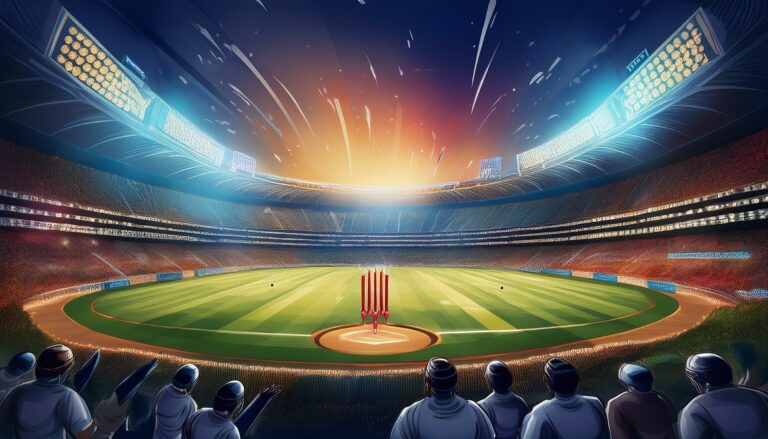Innovations in Cricket Equipment Design
Allpaanel, 11xPlay: Bat technology in cricket has witnessed significant advancements in recent years, with manufacturers constantly striving to push the boundaries of innovation. The traditional willow cricket bat has undergone various modifications to enhance performance, durability, and player experience on the pitch. Engineers and designers are focusing on incorporating cutting-edge materials and manufacturing techniques to create bats that are more responsive, lightweight, and powerful than ever before.
One notable development in bat technology is the introduction of composite materials in bat construction. By blending materials such as carbon fiber and graphite with traditional willow, manufacturers have been able to produce bats with improved strength and responsiveness. This results in bats that offer enhanced power transfer upon impact while maintaining the crucial balance between bat speed and control for the batsman.
Advancements in Cricket Ball Design
In recent years, cricket ball design has seen significant advancements to improve performance and durability on the pitch. Manufacturers have focused on enhancing the aerodynamics of the ball by refining the seam construction and surface texture. These improvements aid bowlers in achieving better grip and seam movement, ultimately leading to an increase in swing and spin variations.
Additionally, advancements in material technology have played a crucial role in the evolution of cricket ball design. The introduction of high-quality leather and synthetic materials has resulted in balls that possess greater resilience and consistency in terms of bounce and wear resistance. These developments have not only benefited bowlers by allowing them to generate more unpredictable deliveries but have also contributed to a more engaging and competitive playing experience for both players and spectators alike.
Evolution of Cricket Helmet Safety Features
As cricket has evolved over the years, so have the safety features of the protective gear, particularly cricket helmets. Initially, cricket helmets were simple in design, offering basic protection to the players. However, with the advancement in technology and a better understanding of head injuries, cricket helmet safety features have undergone significant improvements.
Modern cricket helmets are now designed to provide maximum protection to the player’s head and face, with additional padding and reinforced structures. Ventilation systems have been integrated to ensure airflow and reduce heat buildup during intense matches. Furthermore, the use of high-tech materials such as carbon fiber has enhanced the strength and durability of cricket helmets, making them more reliable in safeguarding players from potential injuries.
Revolutionary Changes in Cricket Bat Grip Technology
One of the most significant advancements in cricket equipment technology in recent years has been the revolutionary changes in cricket bat grip technology. Traditionally, cricket bat grips were made of rubber or coil materials that provided minimal cushioning and grip. However, modern bat grips are constructed using innovative materials that offer superior shock absorption and enhanced feel for the player.
These new-age cricket bat grips are designed to reduce vibrations upon contact with the ball, thus minimizing hand fatigue and improving overall control and performance. With different thickness options and textures available, players can now customize their bat grips to suit their individual preferences and playing styles. Additionally, the improved durability of these grips ensures a longer lifespan, making them a valuable investment for cricketers at all levels of the game.
Innovative Materials Used in Cricket Gloves
Cricket gloves have seen a remarkable evolution in recent years with the introduction of innovative materials that enhance performance and comfort for players. Traditional leather gloves are being increasingly replaced by high-tech materials such as carbon fiber, polyurethane, and neoprene. These materials offer improved flexibility, durability, and grip, providing cricketers with better control while batting and fielding.
The use of innovative materials in cricket gloves has revolutionized the way players approach the game, allowing for better protection against impact and reducing the risk of hand injuries. The lightweight and breathable properties of these materials ensure that players can maintain a secure grip on the bat without compromising on comfort or dexterity. As technology continues to advance, we can expect to see further enhancements in cricket glove design, making them an essential component of every cricketer’s kit.
Enhancements in Cricket Footwear for Performance
Cricket footwear has significantly evolved in recent years to enhance player performance on the field. With advancements in technology and materials, cricket shoes are now designed to offer superior comfort, stability, and traction during gameplay. The incorporation of specialized spikes and studs on the soles provides players with enhanced grip on various surfaces, allowing for quick movements and agility during fast-paced matches.
Moreover, modern cricket footwear is engineered to provide optimal support and cushioning to reduce the risk of injuries and discomfort while playing. The use of lightweight and breathable materials ensures that players can move swiftly and comfortably without feeling weighed down by their shoes. Additionally, the improved durability of these footwear options ensures that they can withstand the rigors of intense gameplay, making them a reliable choice for cricket enthusiasts of all levels.
Progress in Cricket Protective Gear for Players
Cricket protective gear for players has witnessed significant advancements in recent years, prioritizing safety and performance on the field. From robust helmets designed to withstand high-impact blows to lightweight yet durable shin guards that offer superior protection, players now have access to a wide range of gear that enhances their safety during intense gameplay. Additionally, advancements in materials technology have led to the development of cricket gear that is not only protective but also comfortable to wear for extended periods, allowing players to focus on their game without distractions.
The evolution of cricket protective gear has also extended to areas such as body armor and gloves, providing comprehensive protection for players in all aspects of the game. Modern body armor is designed to offer maximum coverage without compromising on flexibility, ensuring that players can move freely while staying safeguarded against potential injuries. Similarly, cutting-edge cricket gloves utilize innovative materials and construction techniques to provide players with a secure grip on their bat while offering enhanced protection for their hands during intense batting and fielding actions.
Innovations in Cricket Practice Equipment
Cricket practice equipment has seen remarkable advancements in recent years, catering to the evolving needs of players across all levels. From cutting-edge bowling machines that simulate real game scenarios to high-tech video analysis tools that provide detailed feedback on technique, players now have access to a wide range of innovative tools to enhance their skills. These advancements have revolutionized the way players train, allowing them to focus on specific areas of their game and make targeted improvements.
Furthermore, the integration of virtual reality technology in cricket practice equipment has opened up new possibilities for players to refine their skills in a simulated environment. Players can now immerse themselves in realistic game situations, facing virtual bowlers and fielders to improve their decision-making and shot selection. This interactive approach to training not only adds an element of fun but also helps players develop their mental strength and tactical awareness on the field.
Technological Advances in Cricket Batting Pads
Cricket batting pads have undergone significant technological advancements in recent years, with a primary focus on enhancing protection and comfort for players. Traditional padding materials like foam and cotton have been replaced with advanced lightweight, shock-absorbing materials that offer improved impact protection without compromising on agility. Additionally, the use of innovative design techniques has allowed for a better fit around the legs, ensuring maximum coverage without hindering movement during play.
Furthermore, the incorporation of moisture-wicking fabrics in cricket batting pads has been a game-changer for players, as it helps in keeping the legs dry and comfortable throughout the game. This feature not only reduces the risk of discomfort and chafing but also enhances overall performance by ensuring that players can focus solely on their game without being distracted by sweat or heat buildup. With continuous research and development in materials and design, cricket batting pads are expected to become even more lightweight, durable, and ergonomically sound in the near future.
Future Trends in Cricket Equipment Design
One of the key future trends in cricket equipment design is the integration of advanced sensors and data tracking technology. This innovation will enable players to analyze their performance metrics in real-time, allowing for instant feedback and improvements in their game. Such technology could provide valuable insights into batting techniques, bowling speeds, and fielding strategies, revolutionizing the way players train and compete.
Another emerging trend in cricket equipment design is the focus on sustainability and eco-friendly materials. With the growing awareness of environmental impact, manufacturers are increasingly exploring options to create cricket gear using recycled materials or biodegradable substances. This shift towards sustainability not only aligns with global efforts towards eco-conscious manufacturing but also emphasizes the importance of reducing the sport’s carbon footprint.
What are some major developments in bat technology?
Major developments in bat technology include lighter materials, larger sweet spots, and improved balance for enhanced performance.
How have cricket balls evolved in design?
Cricket balls have evolved with advancements in seam technology, durability, and visibility for better playability.
What safety features have been added to cricket helmets?
Cricket helmets now feature improved shock absorption, better ventilation, and increased coverage to protect players from potential head injuries.
What revolutionary changes have been made to cricket bat grip technology?
Revolutionary changes in cricket bat grip technology include moisture-wicking materials, ergonomic designs, and improved grip for better control and comfort while batting.
What innovative materials are now being used in cricket gloves?
Cricket gloves now utilize lightweight, breathable, and flexible materials for better dexterity and protection while fielding and batting.
How have cricket footwear designs improved for performance?
Cricket footwear now features better traction, stability, and support to enhance player performance on the field.
What enhancements have been made to cricket protective gear for players?
Cricket protective gear now includes lighter but more durable materials, improved padding, and better fit for maximum safety and comfort during play.
What innovations have been made in cricket practice equipment?
Cricket practice equipment now includes advanced training aids, such as bowling machines, pitch mats, and video analysis tools for better skill development.
How have technological advances improved cricket batting pads?
Technological advances in cricket batting pads include better shock absorption, lightweight materials, and improved flexibility for better movement and protection while batting.
What are some future trends in cricket equipment design?
Future trends in cricket equipment design may include smart technology integration, personalized customization options, and sustainability features for eco-friendly products.







